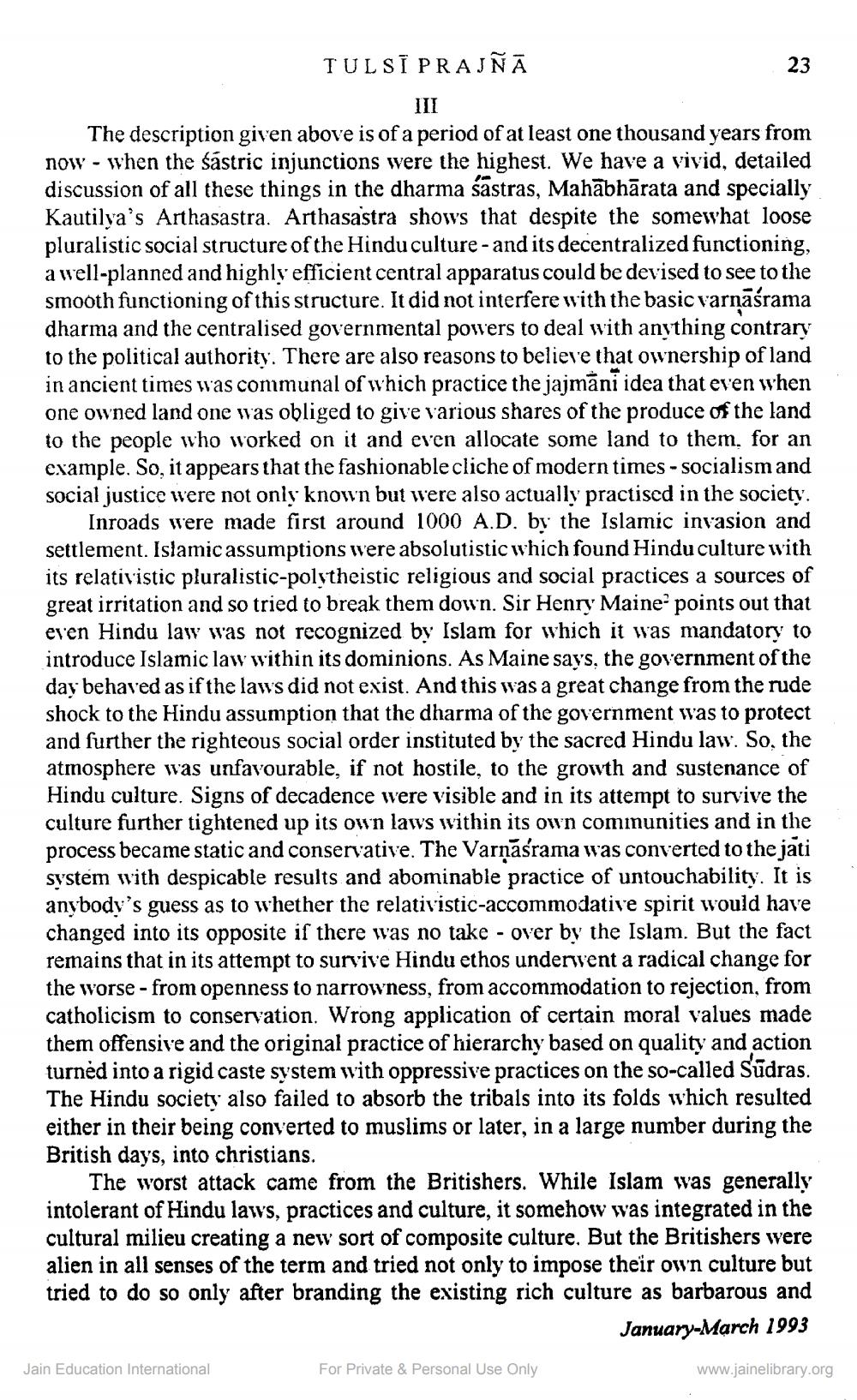________________
TULSI PRAJNĀ
III
The description given above is of a period of at least one thousand years from now - when the śastric injunctions were the highest. We have a vivid, detailed discussion of all these things in the dharma sastras, Mahābhārata and specially Kautilya's Arthasastra. Arthasastra shows that despite the somewhat loose pluralistic social structure of the Hindu culture - and its decentralized functioning, a well-planned and highly efficient central apparatus could be devised to see to the smooth functioning of this structure. It did not interfere with the basic varṇāśrama dharma and the centralised governmental powers to deal with anything contrary to the political authority. There are also reasons to believe that ownership of land in ancient times was communal of which practice the jajmani idea that even when one owned land one was obliged to give various shares of the produce of the land to the people who worked on it and even allocate some land to them, for an example. So, it appears that the fashionable cliche of modern times - socialism and social justice were not only known but were also actually practised in the society. Inroads were made first around 1000 A.D. by the Islamic invasion and settlement. Islamic assumptions were absolutistic which found Hindu culture with its relativistic pluralistic-polytheistic religious and social practices a sources of great irritation and so tried to break them down. Sir Henry Maine points out that even Hindu law was not recognized by Islam for which it was mandatory to introduce Islamic law within its dominions. As Maine says, the government of the day behaved as if the laws did not exist. And this was a great change from the rude shock to the Hindu assumption that the dharma of the government was to protect and further the righteous social order instituted by the sacred Hindu law. So, the atmosphere was unfavourable, if not hostile, to the growth and sustenance of Hindu culture. Signs of decadence were visible and in its attempt to survive the culture further tightened up its own laws within its own communities and in the process became static and conservative. The Varnasrama was converted to the jati system with despicable results and abominable practice of untouchability. It is anybody's guess as to whether the relativistic-accommodative spirit would have changed into its opposite if there was no take over by the Islam. But the fact remains that in its attempt to survive Hindu ethos underwent a radical change for the worse - from openness to narrowness, from accommodation to rejection, from catholicism to conservation. Wrong application of certain moral values made them offensive and the original practice of hierarchy based on quality and action turned into a rigid caste system with oppressive practices on the so-called Sudras. The Hindu society also failed to absorb the tribals into its folds which resulted either in their being converted to muslims or later, in a large number during the British days, into christians.
Jain Education International
23
The worst attack came from the Britishers. While Islam was generally intolerant of Hindu laws, practices and culture, it somehow was integrated in the cultural milieu creating a new sort of composite culture. But the Britishers were alien in all senses of the term and tried not only to impose their own culture but tried to do so only after branding the existing rich culture as barbarous and
January-March 1993
For Private & Personal Use Only
www.jainelibrary.org




